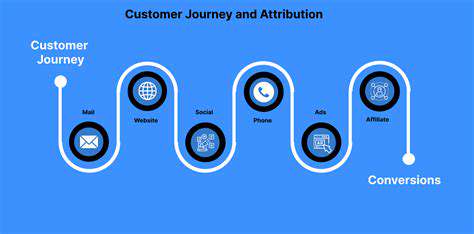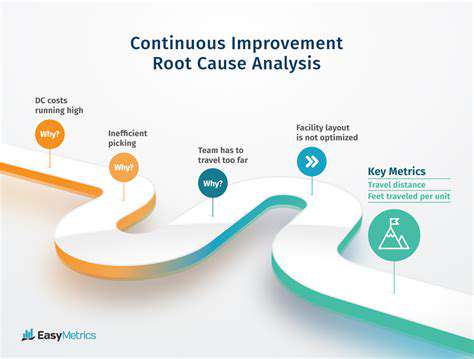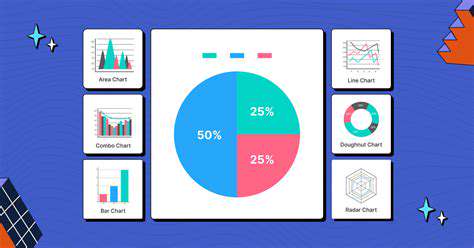Remote Recording Tips for Podcasts
Choosing the Right Microphone and Audio Interface
Microphone Selection for Remote Recording
Choosing the right microphone is crucial for achieving high-quality audio in your remote podcast recordings. Consider factors like your budget, the type of sound you're aiming for (e.g., clear vocals, warm instrument tones), and the recording environment. A dynamic microphone is often a good starting point for podcasting due to its robustness and ability to handle louder sounds without distortion. Condenser microphones, while offering superior detail and clarity, might require careful acoustic treatment in your recording space, especially if it's not soundproofed. Experiment with different microphones if possible to find one that best complements your voice or instrument and your recording setup.
The microphone's polar pattern, which describes how it picks up sound from different directions, is also important. A cardioid pattern, for instance, focuses on sound directly in front of the microphone, minimizing background noise from the sides and rear. This is generally a good choice for podcasting, as it helps isolate your voice and reduce the impact of ambient sounds like traffic or HVAC systems. Understanding these technical details will significantly impact the overall sound quality of your recordings, leading to a more professional-sounding podcast.
Audio Interface Considerations for Podcast Production
An audio interface is a hardware device that connects your microphone to your computer. While some microphones can be plugged directly into your computer's sound card, dedicated audio interfaces offer significant advantages in terms of sound quality, control, and flexibility. They often provide better signal processing, enabling more precise audio adjustments during recording and editing. Look for interfaces that offer phantom power if you're using a condenser microphone, as this power is essential for their operation. The number of inputs and outputs on the interface directly relates to the number of microphones or other audio devices you can connect simultaneously.
Beyond basic functionality, consider the interface's features. Some offer built-in preamps (pre-amplifiers) that enhance the signal strength from your microphone, resulting in a cleaner, more focused sound. A robust audio interface can significantly reduce the need for extensive post-production editing, making your podcasting workflow more efficient and professional. Ultimately, the choice of audio interface should align with your budget, technical requirements, and the scale of your podcasting project.
Consider the potential for future expansion. If you anticipate adding more microphones or other audio equipment to your setup in the future, an audio interface with more inputs and outputs will be more accommodating in the long run. This forward-thinking approach will prevent you from having to upgrade your interface too soon.
Finally, the quality of the converters within the interface is vital. High-quality converters ensure a faithful representation of the audio signal, minimizing noise and distortion. This contributes directly to the overall clarity and professionalism of your podcast.
Investing in a good audio interface will significantly improve the quality of your remote recordings, making a noticeable difference in the listener's experience.
Optimizing Your Recording Environment
Soundproofing Your Space
Creating a quiet and controlled environment is crucial for high-quality recordings. Soundproofing your recording space, whether it's a dedicated room or a corner of your home office, significantly reduces unwanted background noise. This minimizes echoes, reverberations, and other distractions that can muddy your audio. Consider using acoustic panels, blankets, or even strategically placed furniture to absorb sound waves and create a more consistent sonic environment for your podcast.
Choosing the Right Microphone
The microphone you select plays a pivotal role in the final sound quality of your podcast. A high-quality microphone will capture your voice clearly and with minimal background noise. Consider factors like directional characteristics (cardioid, omnidirectional), frequency response, and sensitivity when making your choice. Investing in a good microphone is an investment in the overall professional feel of your podcast.
Optimizing Your Recording Setup
Positioning your microphone correctly is paramount. Experiment with different placements to find the sweet spot that minimizes background noise and emphasizes your voice. A good rule of thumb is to place the microphone at a distance that's appropriate for the level of sound you intend to capture. Pay close attention to the angle of the microphone and its proximity to other sound sources within your recording environment.
Controlling Background Noise
Background noises, from traffic to household appliances, can significantly impact the quality of your recordings. Identify and address these sources of unwanted noise. Consider using noise-canceling headphones or a dedicated noise-reduction software to mitigate these issues. Taking steps to eliminate background noise enhances the clarity and focus of your podcast's audio.
Lighting and Visuals
While not directly related to audio, a well-lit and visually appealing recording space can contribute to the overall professionalism and engagement of your podcast. Good lighting helps you look presentable on camera, and a visually appealing background can help maintain listener interest. Ensure the lighting is even and avoids harsh shadows or glare.
Using Audio Editing Software
Even with the best recording setup, post-production editing is essential for high-quality podcasts. Utilize audio editing software to fine-tune your recordings. This includes removing background noise, adjusting levels, and adding effects to enhance the overall sound quality. Learning basic editing techniques can dramatically improve the final product.
Importance of Consistent Recording Practices
Consistency in your recording practices is vital for creating a polished and professional podcast. Establish a routine for recording, including setup procedures, microphone placement, and vocal warm-ups. This consistency ensures a high degree of quality and a seamless listening experience for your audience. Regular practice makes perfect, and this carries over to creating a compelling and engaging podcast.
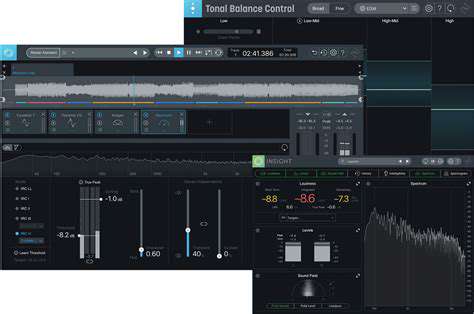
Essential Remote Recording Equipment
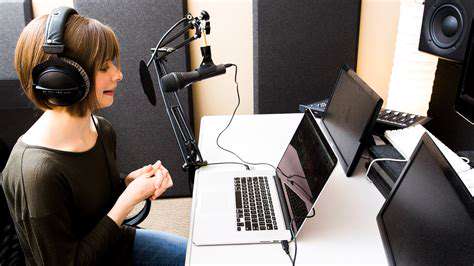
High-Quality Microphones
Choosing the right microphone is crucial for achieving professional-sounding remote recordings. A dynamic microphone, for instance, is excellent for capturing vocals and instruments in a variety of settings, and it's a popular choice for its durability and ability to handle loud sounds without distortion. Consider factors like your budget, the type of recording you'll be doing, and the acoustic environment. A good microphone will significantly improve the quality of your recordings, making them clearer and more professional. It's often the single most impactful piece of equipment you can invest in for remote recordings, so don't skimp on this part of your setup.
Condenser microphones, on the other hand, excel at capturing delicate sounds and nuances, making them ideal for solo vocals or instruments requiring a more detailed sound capture. Their sensitivity to sound makes them a worthwhile investment for those seeking the highest possible audio fidelity. However, they require a phantom power source that is typically built into audio interfaces, which need to be considered when deciding on the microphone type.
Reliable Audio Interfaces
An audio interface is the bridge between your microphone and your computer. It's essential for converting the analog audio signal from your microphone into a digital signal that your computer can understand. An audio interface also allows you to control various audio settings, ensuring a consistent and high-quality recording experience. A good audio interface is more than just a technical necessity; it's a crucial tool for maintaining consistent sound quality across different recording sessions.
Choosing the right interface depends on your needs and budget. The number of inputs and outputs, the sample rate, and the available features should be considered before purchasing. Investing in a quality interface will save you time and effort by ensuring that your recordings are clear, professional, and meet your needs. Look for interfaces with features like monitoring and headphone outputs. These features make it easy to monitor your recording in real-time.
Essential Recording Software
High-quality recording software is indispensable for capturing and editing audio in a remote recording environment. Professional audio editing software provides tools for recording, mixing, and mastering audio, allowing you to fine-tune your recordings to perfection. This software is the backbone of your recording process, enabling you to manipulate audio, adjust levels, and add effects to create a polished final product. Look for software that offers a range of features, from basic recording and editing tools to advanced mixing and mastering capabilities.
A robust, user-friendly recording software suite provides the tools to seamlessly import, edit, and export your recordings. This software can significantly enhance the quality of your recordings by allowing for precise adjustments and enhancements to your sound. Finding a good program often involves a balance of features, ease of use, and pricing. Good software will also allow for easy integration with your audio interface.
Read more about Remote Recording Tips for Podcasts
Hot Recommendations
- Personalizing Email Content with User Behavior
- Geofencing for Event Attendance Tracking
- Reputation Management on Social Media
- UGC Beyond Photos: Videos, Testimonials, and More
- The Future of Data Privacy Regulations
- Accelerated Mobile Pages (AMP) Benefits and Implementation
- The Future of CRM: AI and Voice Integration
- Google Ads Smart Bidding Strategies: Maximize Value
- Common A/B Testing Pitfalls to Avoid
- Local SEO Strategies for Small Businesses



